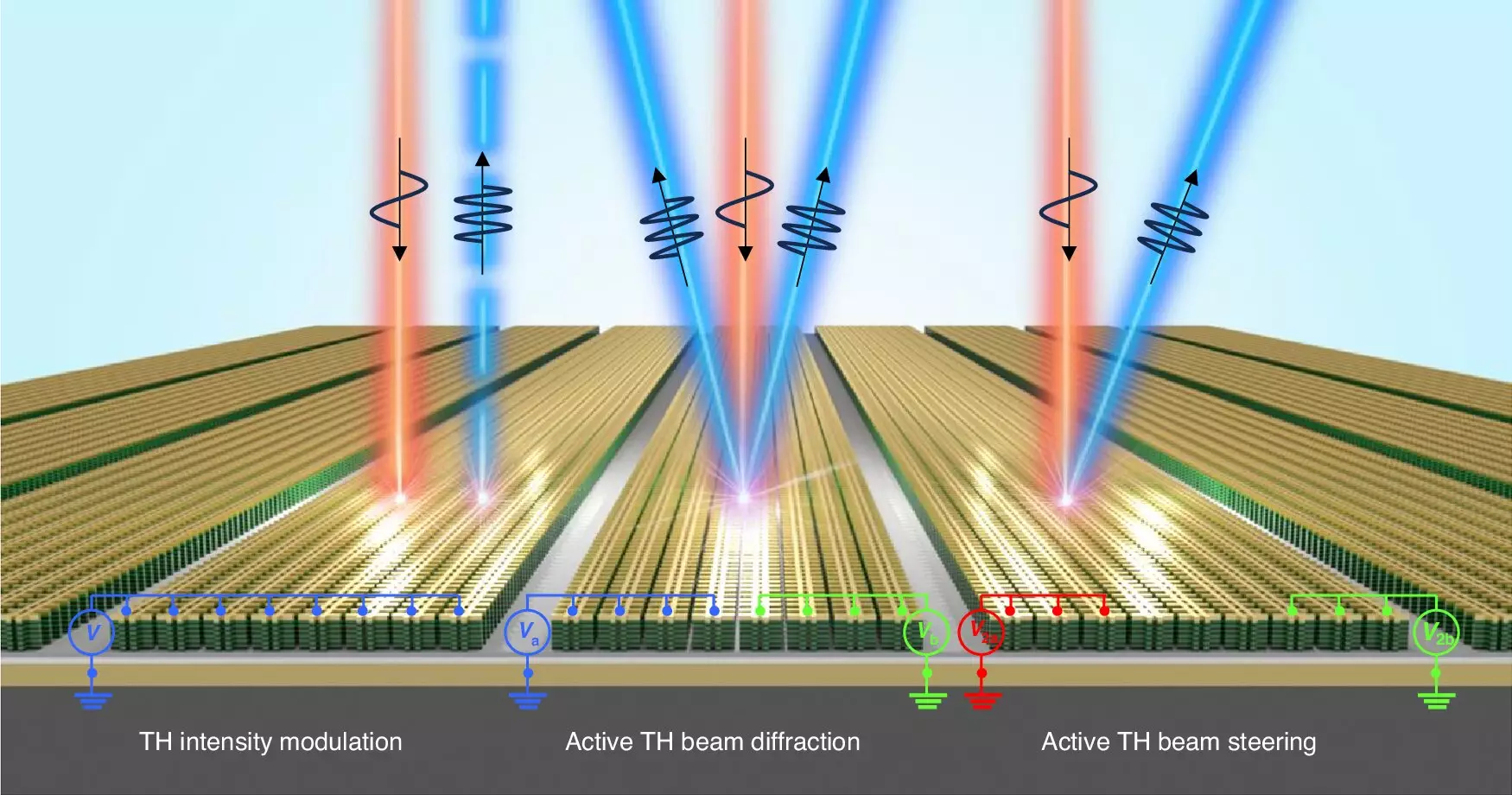Recent advancements in nonlinear optical metasurface technology herald exciting changes in the field of photonics. Researchers have unveiled a groundbreaking method characterized by structural designs smaller than the wavelength of light, leading to significant implications for next-generation communication systems. This innovation sets the stage for enhanced applications in quantum light sources and medical diagnostics, integrating a level of sophistication that is reshaping how we understand and utilize light.
The pivotal study conducted by Professor Jongwon Lee and his team at UNIST introduced electrically tunable third-harmonic generation (THG) for the first time. This innovative approach employed an intersubband polaritonic metasurface coupled with multiple quantum wells (MQWs) to achieve remarkable results, including a staggering 450% modulation depth of the THG signal. Furthermore, the researchers successfully suppressed zero-order THG diffraction by 86%, demonstrating the superior control and precision offered by this new technology.
The critical aspect of this research is the ability to manipulate light at an unprecedented level. The team showcased local phase adjustments exceeding 180 degrees, a vital feature for diverse photonic applications. By employing phase gradients for THG beam steering, they offered a fresh perspective on how electrical adjustments can lead to the invention of flat nonlinear optical devices that can perform multifaceted tasks.
Nonlinear optics, a field that studies the interactions of light and matter, stands at the forefront of innovations that push the boundaries of conventional communication technologies. Unlike traditional systems that rely on single wavelengths, nonlinear optics can generate multiple wavelengths from a solitary light source, exponentially increasing data transmission capabilities. An everyday intuitive representation of such technology is the green laser pointer, which epitomizes the practical benefits of nonlinear optical phenomena.
The developments made by Professor Lee’s group allow for optical devices to become more compact and lightweight. The ambition is clear—future laser devices could be as thin as a sheet of paper and constructed from materials less than the diameter of a human hair. This vision signifies a new era for optical instrumentation, promising integration into everyday devices without the bulk traditionally associated with laser technologies.
One of the standout features of this study is the introduction of voltage control over second-harmonic generation (SHG), setting a precedent in nonlinear optical technology. The ability to independently modulate both intensity and phase in THG enables the metasurface to exert significant control over various attributes of light, including wavelength, intensity, and phase. This level of modulation presents extraordinary possibilities for applications in fields such as cryptography, dynamic holography, and advanced quantum sensing techniques.
Professor Lee summarized the importance of this research, stating, “Our advancement in controlling THG offers limitless potential for future technologies.” Such a statement encapsulates the groundbreaking ethos that drives substantial innovations in light manipulation, underscoring the team’s commitment to exploring the frontiers of optical sciences.
This recent study is not merely a scientific achievement but a transformative breakthrough that promises to redefine how light is utilized across numerous applications. With the ability to finely tune optical properties through electrical means, the future of light-based technologies appears incredibly bright.


Leave a Reply